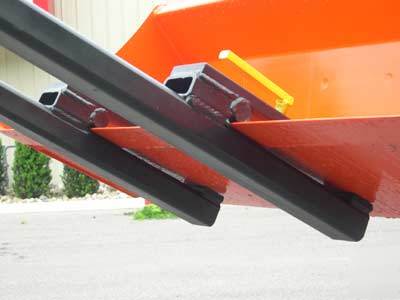

However, this is not the end of the Edge Tamer story. Less than $100 (with the TTWT 5% off coupon code) provides an effective snow removal solution for your compact tractor. For example, we are planning to use the 6″ version on my dad’s Case 580 backhoe. For heavier buckets, or situations where the ground under the snow is extra soft/muddy, you may want the wider version. For wider buckets, you may want to consider addind an Edge Tamer in the middle. For sub-compact tractors, two of the 3″ will work fine. Who knows, we may clear our entire back yard!Įdge Tamers are offered in 3″, 4″, and now 6″ widths. When (if?) we get some snow, we’ll get some video with the Edge Tamers for their primary use. As we were testing, the loader even started picking up leaves! Obviously, the Edge Tamers are not marketed as a leaf collection system, but hey, I could think of worse ways to attempt leaf collection! …like a hand-held yard rake!! This video (shot in the summer) shows how the Edge Tamers prevent the loader from gouging into the suburban sod. The Edge Tamers will fit any subcompact/compact or even larger front end loaders. The Edge Tamers fit onto the cutting edge of tractor (or skid steer) mounted front loader. The primary purpose and driving force for you to purchase the Edge Tamer is its simple and cost effective solution to snow removal. The Edge Tamer ‘system’ as I’ll refer to it here is just such a solution. The parameters for this flow are basic, a keyword for searching the Subject or Filename containing, which I have called Dept and the Path, which can either be a folder or a Site Name.By now, you’ve probably noticed my fondness for products which solve a specific problem today, and can also be extended to solve additional problems either today or in the future.
If you are looking to have a dynamic Folder and Site, you can define a third parament or key:value pair.
.jpg)
We must now use the filter array action, which will allow us to search the Subject or Attachment name to see if it contains one of the keywords from the Dept key. If we get a match, the array will return a value for the Path. Here I use a compose action to return the first object from the array result. Why do I use the first expression? Because the result is returned as an array, it expects multiple elements. Calling the path without either using the first expression or body(‘FilterFindPath’)? to select the first element, you will receive an error “ Array elements can only be selected using an integer index“. Using First() or calling the element by using an integer will allow you to simplify your Flow if you know the result will always be the first element. Using the Create File action for SharePoint, I am using the Attachments Name and Attachments Content dynamic expressions from the email trigger. By default, when you select these dynamic values, Power Automate will put your actions into an Apply to Each. Why? This is because the results for the attachment name and content are returned as an array. You can accept this and your solution will handle multiple attachments. For my solution, I am a stickler for efficiency and have used the first() expression described previously as my Xerox will only ever include one file. You can accept the default Power Automate build if you would prefer.
#Attachment tamer for yosemite how to#
I’ve two actions here, one to demonstrate how to save to a custom dynamic path, the other to a custom dynamic site.


 0 kommentar(er)
0 kommentar(er)
